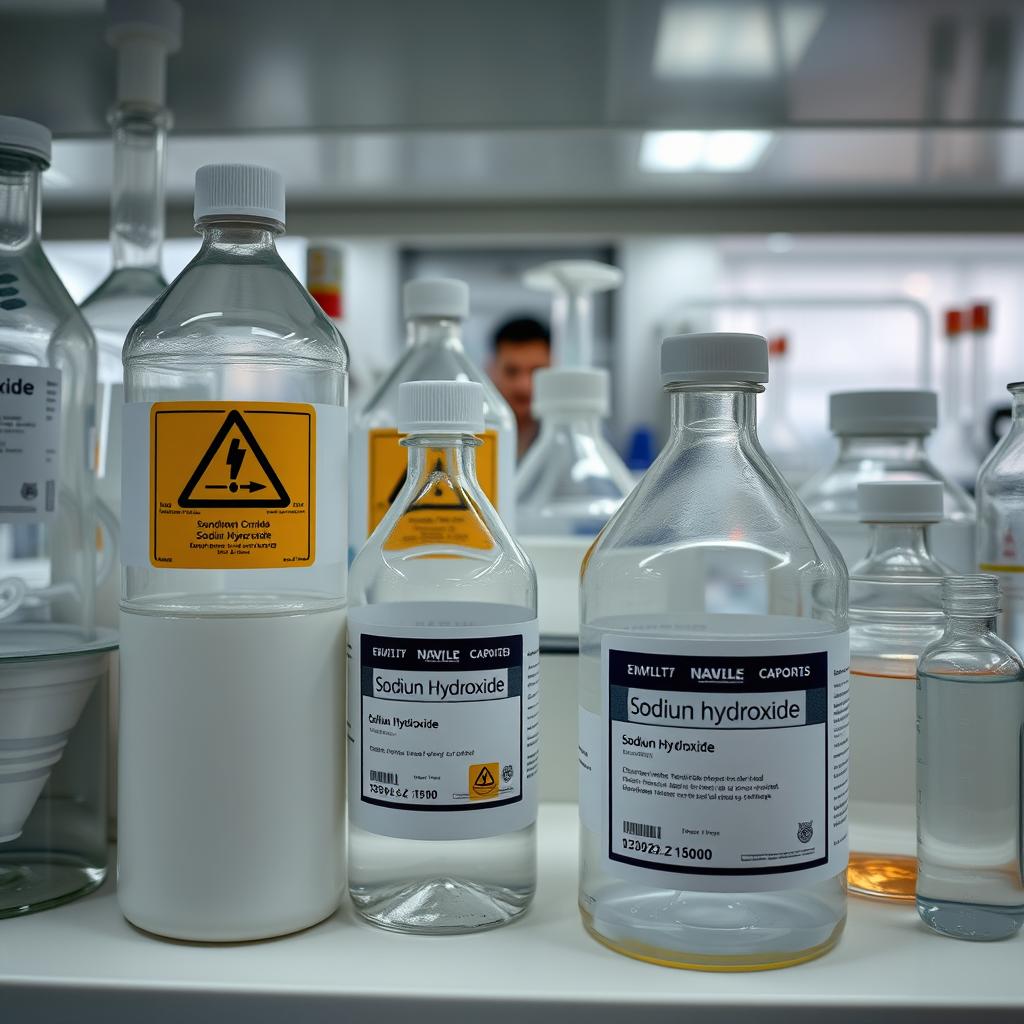What happens if sodium hydroxide isn’t stored right? How does it affect its shelf life? Sodium hydroxide is a strong chemical that needs careful handling and storage. This is key to keep it effective and safe. Knowing how to store sodium hydroxide is vital. It matters in both work and home settings. This knowledge helps keep sodium hydroxide in good condition for longer.
Storing and handling sodium hydroxide correctly is very important. It helps avoid accidents and keeps its quality high. The right storage and handling make sure sodium hydroxide stays effective and safe. This is crucial for its shelf life.
Click to use Silverigroup personal shopper services
Key Takeaways:
- Proper storage practices are essential to maintain the quality and effectiveness of sodium hydroxide.
- The storage and shelf life of sodium hydroxide depend on various factors, including storage conditions and handling practices.
- Understanding the importance of proper storage is crucial for industrial, laboratory, and residential settings.
- Maximizing the sodium hydroxide shelf life requires careful handling and storage.
- Following the right storage and handling procedures ensures the sodium hydroxide remains safe to use.
- Storage and shelf life: sodium hydroxide are critical aspects that impact its quality and usability.
Click to buy citric acid from Silvairgroup
Understanding Sodium Hydroxide Properties and Storage Needs
Sodium hydroxide is a very caustic substance. It needs careful handling and storage to keep it safe and effective. Knowing its properties helps us store it right, whether in big industrial places, labs, or homes. When storing sodium hydroxide, we must think about a few key things:
- Chemical reactivity: Sodium hydroxide can catch fire or explode if mishandled.
- Environmental sensitivity: It reacts to moisture, heat, and light, which can harm its quality and safety.
- Storage materials: The container and materials must be safe for sodium hydroxide to avoid contamination and reactions.
Knowing how to store sodium hydroxide safely is important. We should keep it in a cool, dry spot, away from things it can react with. Using the right safety gear is also key. Safe storage and handling of sodium hydroxide prevent accidents and keep everyone safe.
Chemical Properties Affecting Storage
The chemical makeup of sodium hydroxide, like its high pH and reactivity, needs special attention. These traits impact what we can use to store it and how we should store it. So, picking the right storage containers and following the right storage steps is crucial.
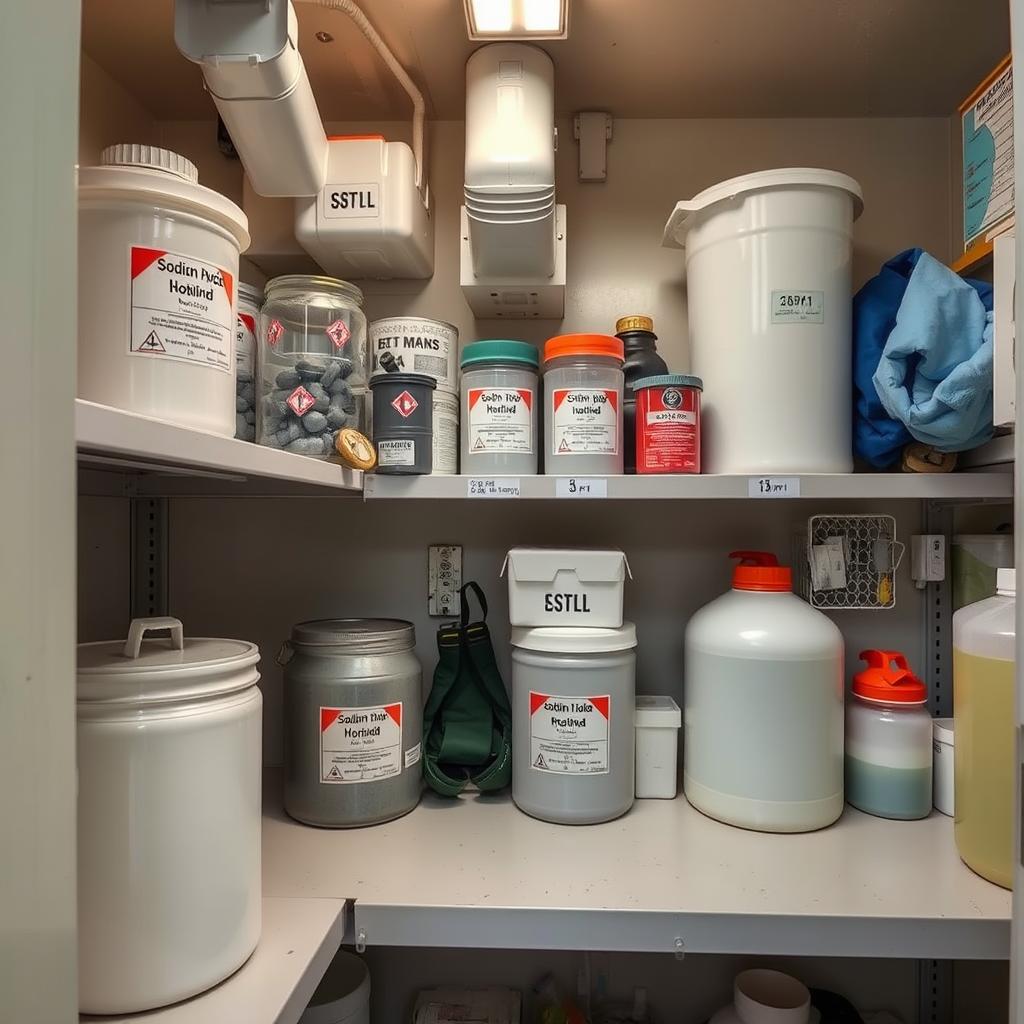
Proper Container Selection for Sodium Hydroxide
Choosing the right container for sodium hydroxide is key for safety and keeping it fresh. To store sodium hydroxide safely, pick a container that matches the substance. Some plastics and metals work well, but others can corrode or react.
Click to buy Citric Acid Anhydrous from Silvairgroup
When picking a sodium hydroxide container, think about sealing, size, and labeling. A sealed container keeps out moisture and air. The right size container prevents over- or under-filling. And clear labels are crucial for knowing what’s inside and how to handle it. Here are some tips for choosing the best container:
- Go for a container made from a compatible material, like HDPE or stainless steel.
- Make sure the container seals well to keep out moisture and air.
- Pick a size that fits the sodium hydroxide you’re storing.
- Label it clearly with what’s inside and any safety tips.
Click to buy liquid Citric Acid from Silvairgroup
By following these tips and considering how to store sodium hydroxide safely, you can keep this corrosive substance safe and effective. Always follow sodium hydroxide container recommendations and handle it with care.
| Container Material | Compatibility with Sodium Hydroxide |
|---|---|
| HDPE | Compatible |
| Stainless Steel | Compatible |
| Aluminum | Not Compatible |
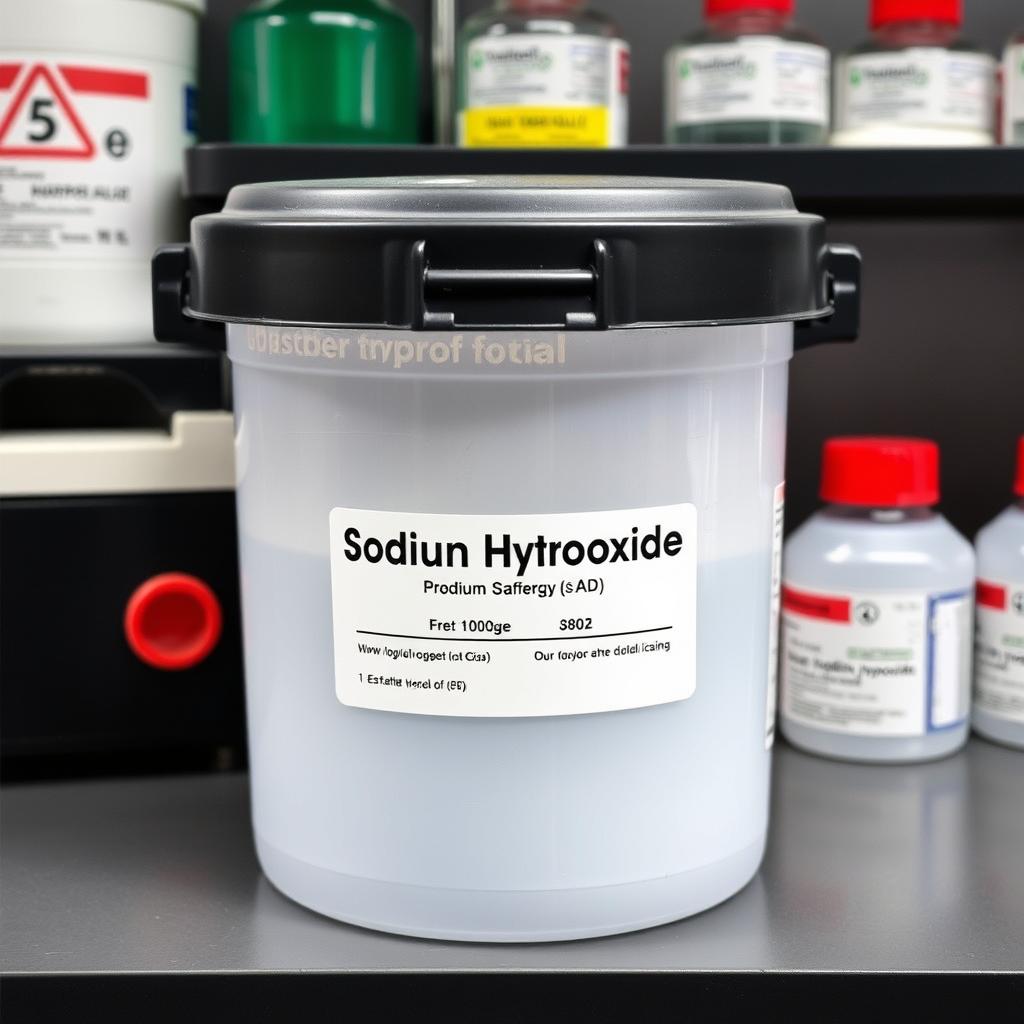
Optimal Storage Conditions and Requirements
Storing sodium hydroxide right is key to keeping it safe and effective. The right storage conditions are crucial for its shelf life. Temperature, humidity, and air flow are important factors to consider. For the best storage, keep the temperature steady. Temperature control guidelines suggest a cool, dry spot away from sunlight and heat. It’s also important to keep humidity levels just right. Using desiccants or dehumidifiers can help manage moisture.
Click to buy frozen a grade beluga fish from Silverigroup
Key Considerations for Optimal Storage
- Temperature control: Store sodium hydroxide in a cool, dry place, away from direct sunlight and heat sources.
- Humidity control: Maintain optimal moisture levels using desiccants or dehumidifiers.
- Ventilation: Ensure adequate air circulation to prevent the accumulation of hazardous fumes.
By following these tips, you can create a safe storage space for sodium hydroxide. This ensures its quality and safety. Taking the right steps is essential for a successful storage experience.
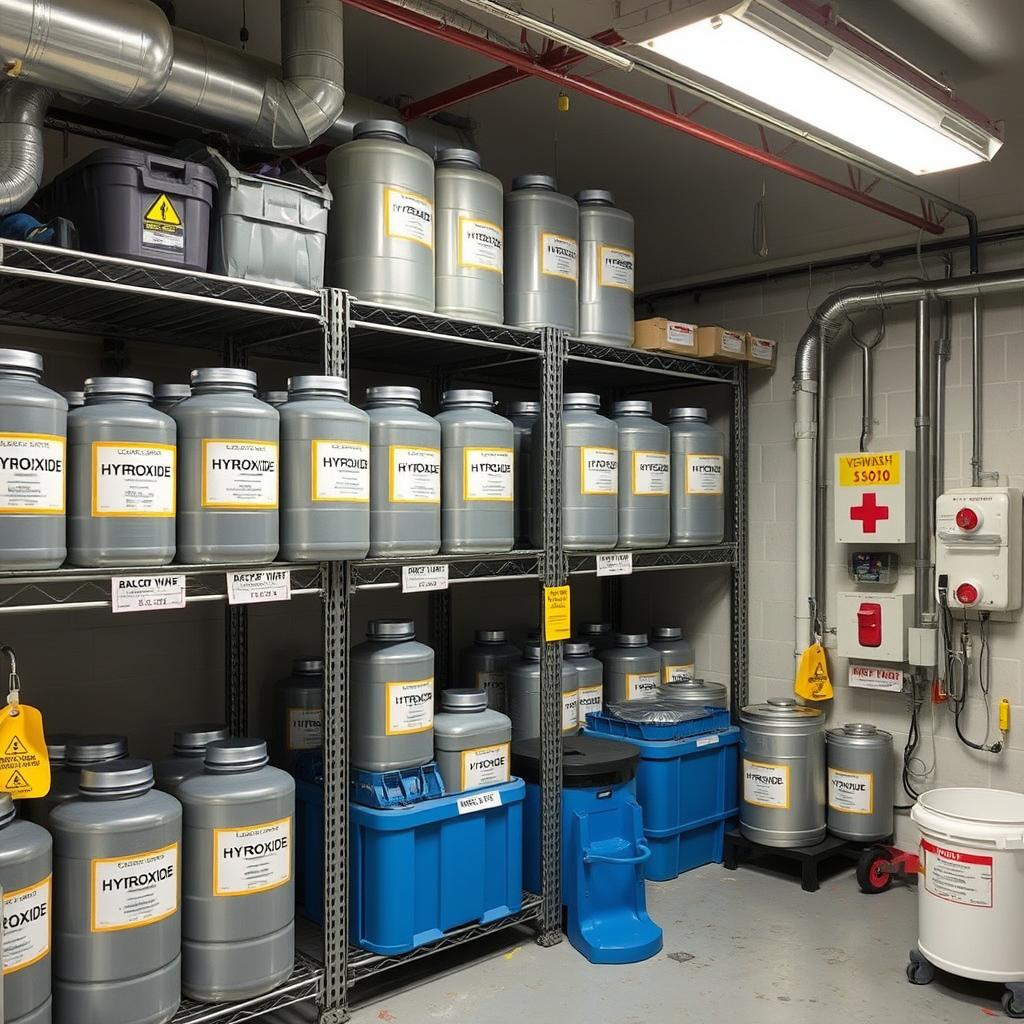
Safety Measures for Storing Sodium Hydroxide
Storing sodium hydroxide safely is very important. To ensure a safe environment, it’s key to follow the best practices. This means wearing gloves, goggles, and a face mask when you handle it. Also, proper labeling and signs are crucial to avoid accidents and misunderstandings.
To store sodium hydroxide safely, consider these key measures:
- Restrict access to storage areas to authorized personnel only
- Implement safety protocols, including spill response procedures and regular safety inspections
- Use proper storage containers that are specifically designed for sodium hydroxide
By following these guidelines, you can reduce risks when storing sodium hydroxide. It’s also vital to get regular training on handling and storing it. This helps prevent accidents and keeps the work environment safe. Always put safety first when working with sodium hydroxide, and follow the best practices for storing it to avoid hazards.
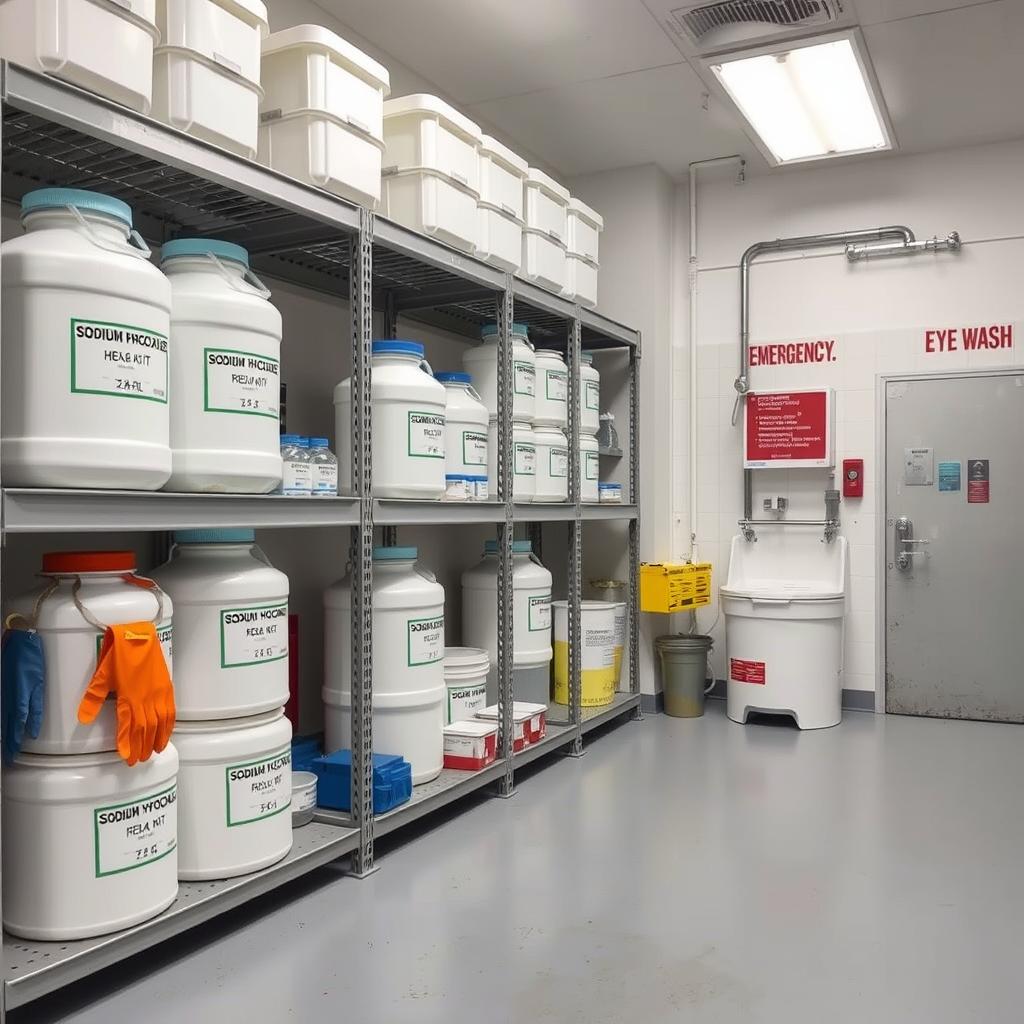
Storage and Shelf Life: Sodium Hydroxide Best Practices
Keeping sodium hydroxide in the right place is key to its quality and safety. The way you store it changes based on where you are. In big places like factories, it’s all about bulk storage and safe handling. This stops accidents and keeps things clean. In labs, it’s all about safety and easy access for research. Sodium hydroxide needs its own spot, the right containers, and clear labels. These steps help keep labs safe and accident-free. Important lab storage tips include:
- Using secondary containment to prevent spills and leaks
- Storing sodium hydroxide in a cool, dry place, away from direct sunlight
- Following proper handling procedures to prevent skin and eye contact
At home, safety is the main goal when storing small amounts of sodium hydroxide. Keep it in a safe, well-ventilated spot, where kids and pets can’t get to it. By following these tips, you can keep your sodium hydroxide safe and in good shape.
Signs of Sodium Hydroxide Degradation
It’s important to know when sodium hydroxide goes bad. Knowing its expiration date is key. Regular checks help keep it safe and effective. Look out for changes in how it looks or feels. Air and moisture can damage it. Testing its quality is a must.
- Visual inspection for changes in color or texture
- Concentration tests to ensure the sodium hydroxide meets the required standards
- Purity tests to detect any contaminants
Spotting these signs early helps avoid using bad product. It keeps your sodium hydroxide in top shape. This is crucial for safety and quality.

Extending the Shelf Life of Sodium Hydroxide
To keep sodium hydroxide fresh, it’s important to use the right methods. Keeping it dry is key to its quality. Moisture can damage it, shortening its shelf life. Using desiccants and sealing well can help. Storing it in the right environment can make it last longer. This is especially true for businesses that use it a lot.
Quality Maintenance Strategies
Testing and rotating stock are important. They help keep sodium hydroxide working well. Also, storing it with nitrogen can stop it from degrading. These steps can make sodium hydroxide last longer. It saves money and reduces waste. Good storage and handling are key for keeping it effective.
Common Storage Mistakes to Avoid
Storing sodium hydroxide right is key to keeping it safe and effective. Knowing common mistakes helps avoid accidents and keeps your supplies good for longer. It’s important to know what to watch out for and how to prevent problems.
Container-Related Issues
Wrong containers or bad seals can ruin the sodium hydroxide. Use the right containers and make sure they’re sealed and labeled well.
Environmental Control Errors
Not controlling temperature or humidity can harm the sodium hydroxide. Keep it in a cool, dry spot to keep it good and prevent damage.
Some common mistakes to steer clear of include:
- Using the wrong containers or materials
- Sealing or labeling containers wrong
- Not controlling temperature or humidity well
- Handling or moving the chemical badly
Knowing these mistakes and how to avoid them helps keep your sodium hydroxide safe and working well. Always follow the right storage tips and rules to reduce risks and keep the chemical quality high.
| Storage Mistake | Solution |
|---|---|
| Using incompatible containers | Use containers specifically designed for sodium hydroxide |
| Improper sealing or labeling | Ensure proper sealing and labeling of containers |
| Inadequate temperature or humidity control | Store the chemical in a cool, dry place |

Emergency Procedures and Storage Safety Protocols
Handling chemicals like sodium hydroxide requires being ready for emergencies. A good emergency plan is vital for safe storage. This plan should cover how to handle spills and train staff on safety. It’s important for those working with sodium hydroxide to know the importance of wearing protective gear. They should also know how to act in an emergency. Regular drills help everyone stay ready and know what to do.
To store sodium hydroxide safely, follow key sodium hydroxide storage tips. Keep it in a well-ventilated area and away from harmful substances. Some must-have safety gear for storage areas includes:
- Eyewash stations
- Emergency showers
- Fire extinguishers
Having these safety steps and followinghow to store sodium hydroxide safely helps reduce risks. It’s also key to update your emergency plan often to keep it effective.
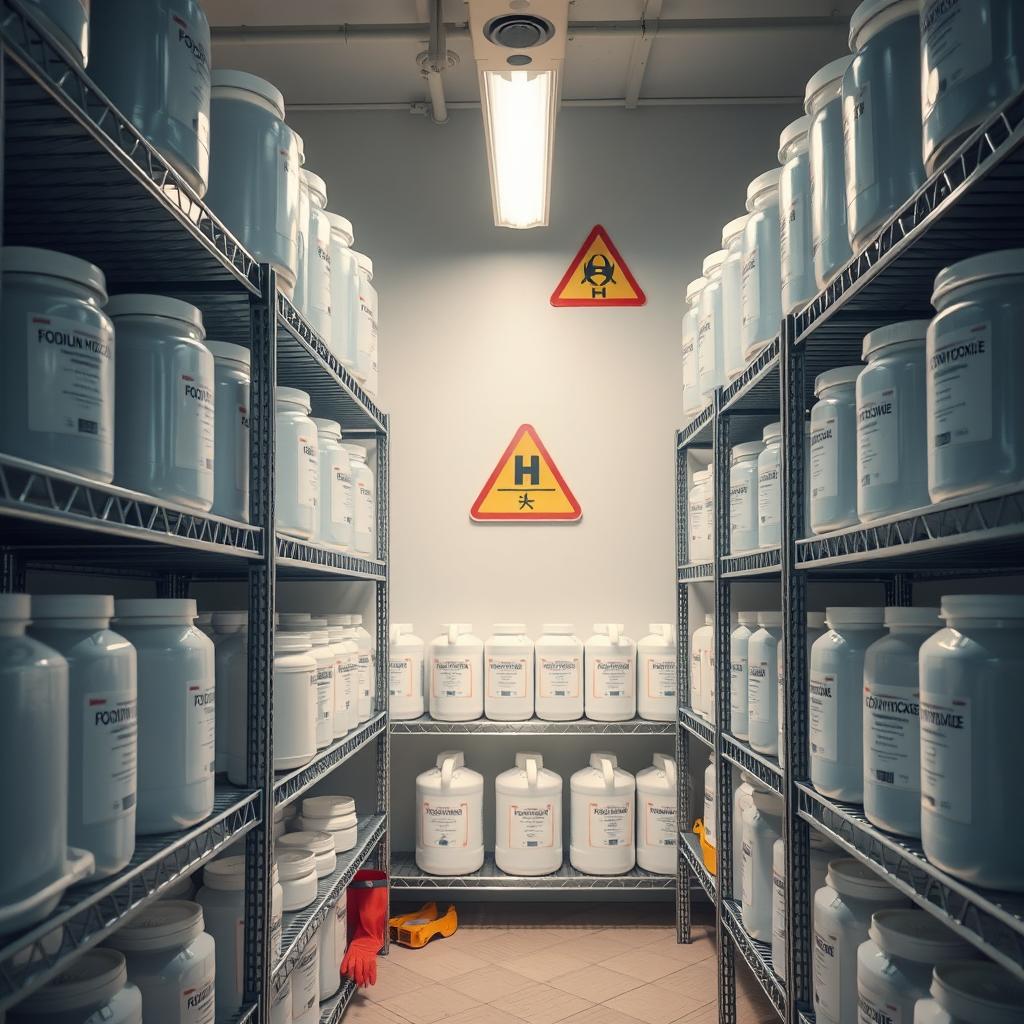
Conclusion: Ensuring Long-Term Sodium Hydroxide Storage Success
Proper storage and shelf life: sodium hydroxide is key to keeping this essential chemical safe and effective. By focusing on preserving sodium hydroxide quality, you can make sure your storage practices work well for a long time.
Choosing the right containers and keeping the environment just right are crucial steps. Each one helps keep sodium hydroxide fresh for longer. By sticking to industry standards and best practices, you can keep your sodium hydroxide safe, cut down on waste, and offer top-quality products or solutions.
It’s important to regularly check and update your storage methods. This helps you keep up with new safety rules and tech. Let this guide help you on your journey to storage and shelf life: sodium hydroxide success. With the right steps, you’ll protect your investment and keep your sodium hydroxide supply going strong.
FAQ: Storage and Shelf Life: Sodium Hydroxide
What are the storage conditions for sodium hydroxide?
Sodium hydroxide, also known as caustic soda, needs specific storage conditions. It should be kept in a cool, dry, and well-ventilated area. This prevents damage from moisture, humidity, and extreme temperatures. The storage area must be restricted and clearly labeled. This is to prevent unauthorized access.
How long does sodium hydroxide last in storage?
Sodium hydroxide’s shelf life depends on storage conditions. When stored properly in a sealed container, it can last for several years. Regular inspections and concentration tests are crucial to ensure its quality.
What type of container is best for storing sodium hydroxide?
Sodium hydroxide should be stored in compatible, airtight containers. These can be certain plastics, stainless steel, or enameled steel. The container must have a secure closure to prevent air and moisture exposure. Containers made of aluminum, brass, or copper should be avoided. They can react with sodium hydroxide.
How can I extend the shelf life of my sodium hydroxide?
To extend sodium hydroxide’s shelf life, maintain optimal storage conditions. Keep the area cool, dry, and well-ventilated. Use desiccants to absorb moisture and regularly test the product’s concentration. Proper inventory management is also key. Use the oldest stock first to preserve quality over time.
What are the safety precautions when storing sodium hydroxide?
Storing sodium hydroxide requires strict safety measures. Always wear appropriate personal protective equipment (PPE) like gloves, goggles, and a face shield. Ensure the storage area is well-ventilated and restricted to authorized personnel only. Develop emergency response protocols, including spill containment and neutralization procedures. Provide regular safety training for all employees who may interact with sodium hydroxide.

